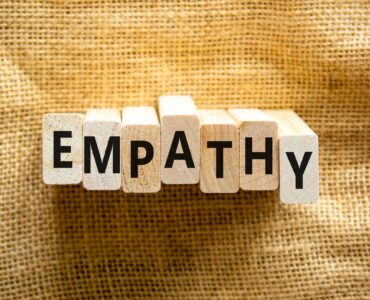 An analysis of popular shows on Netflix found that the streaming giant isn’t offering an accurate portrayal of the problem of teen pain.
An analysis of popular shows on Netflix found that the streaming giant isn’t offering an accurate portrayal of the problem of teen pain.
“Media is one of the most powerful engines of influence on children’s development and could be harnessed to address pain and suffering in the world. Stories matter,” said Dr. Melanie Noel, PhD, principal investigator and professor of clinical psychology at the University of Calgary. “Youth learn by watching and fictional stories can matter more in some cases than real life stories.”
Netflix And Teen Pain
For the study, researchers analyzed 60 hours of Netflix content including popular shows and movies like Spiderman: Homecoming and Stranger Things. Their analysis found that media oftentimes depicted teen pain arising from violence and injuries, not from more common sources of real world pain like medical issues or chronic pain conditions. They also found that this pain was mostly represented in boys and white individuals, as they noted a lack of accurate pain representation in girls, gender diverse people and people with racialized identities.
“If we’re not showing the types of pain that adolescents might typically experience like back pain and menstrual pain, then we’re trivializing pain,” said Dr. Abbie Jordan, PhD, co-author and senior lecturer at The University of Bath. “We’re not doing a great job of enabling them to think about how to manage pain, how to talk about pain and how to show empathy when other people experience pain.”
Researchers noted that adolescence is a developmental period where chronic pain oftentimes emerges, affecting as many as one in five youth. They believe that changing the narrative about the problem of pain on screen could help real world teens going through actual pain issues.
“I believe understanding how pain is portrayed in popular media- the societal and cultural narratives about pain- is among the most powerful influences on children’s developing understanding of not only their pain experiences, but how they show up for others who suffer,” said Noel.
While it’s clear that not every television series or movie will be rooted in actual real-world problems, the study does offer a unique perspective on how teen pain is being portrayed to a large scale audience. Not only could there be some benefit from talking about issues that more commonly affect teens in the real world, but how these characters respond to on-screen pain problems could help teens become more empathetic to those in real life who are battling their own pain issues. It’s certainly some interesting food for thought, and we’ll be more mindful of how pain issues are portrayed the next time we fire up our streaming services.
In the meantime, if you or someone you know needs help overcoming a pain issue of their own, reach out to Dr. Cohn and his team today at (952) 738-4580.
 New research shows that upwards of 60 percent of people living with a traumatic brain injury are affected by a chronic pain condition.
New research shows that upwards of 60 percent of people living with a traumatic brain injury are affected by a chronic pain condition. New research from the University of Arizona Health Sciences and published in the journal PAIN found that nearly five million Americans experienced the co-occurrence of chronic pain and a mental health condition like anxiety or depression, leading to functional limitations in their daily life.
New research from the University of Arizona Health Sciences and published in the journal PAIN found that nearly five million Americans experienced the co-occurrence of chronic pain and a mental health condition like anxiety or depression, leading to functional limitations in their daily life. We always recommend that you surround yourself with a support system that is empathetic to your chronic pain condition, but new research shows that empathy can actually help to decrease pain sensations.
We always recommend that you surround yourself with a support system that is empathetic to your chronic pain condition, but new research shows that empathy can actually help to decrease pain sensations. One of the biggest drawbacks of dealing with a chronic pain condition is the uncertainty that comes with it. You don’t know if a flareup will occur at the wrong time, and unfortunately this uncertainty can end up dictating your life and decisions. One treatment technique that aims to address this problem is known as Acceptance and Commitment Therapy, or ACT. In today’s blog, we take a closer look at ACT as a treatment technique for patients with chronic pain.
One of the biggest drawbacks of dealing with a chronic pain condition is the uncertainty that comes with it. You don’t know if a flareup will occur at the wrong time, and unfortunately this uncertainty can end up dictating your life and decisions. One treatment technique that aims to address this problem is known as Acceptance and Commitment Therapy, or ACT. In today’s blog, we take a closer look at ACT as a treatment technique for patients with chronic pain.